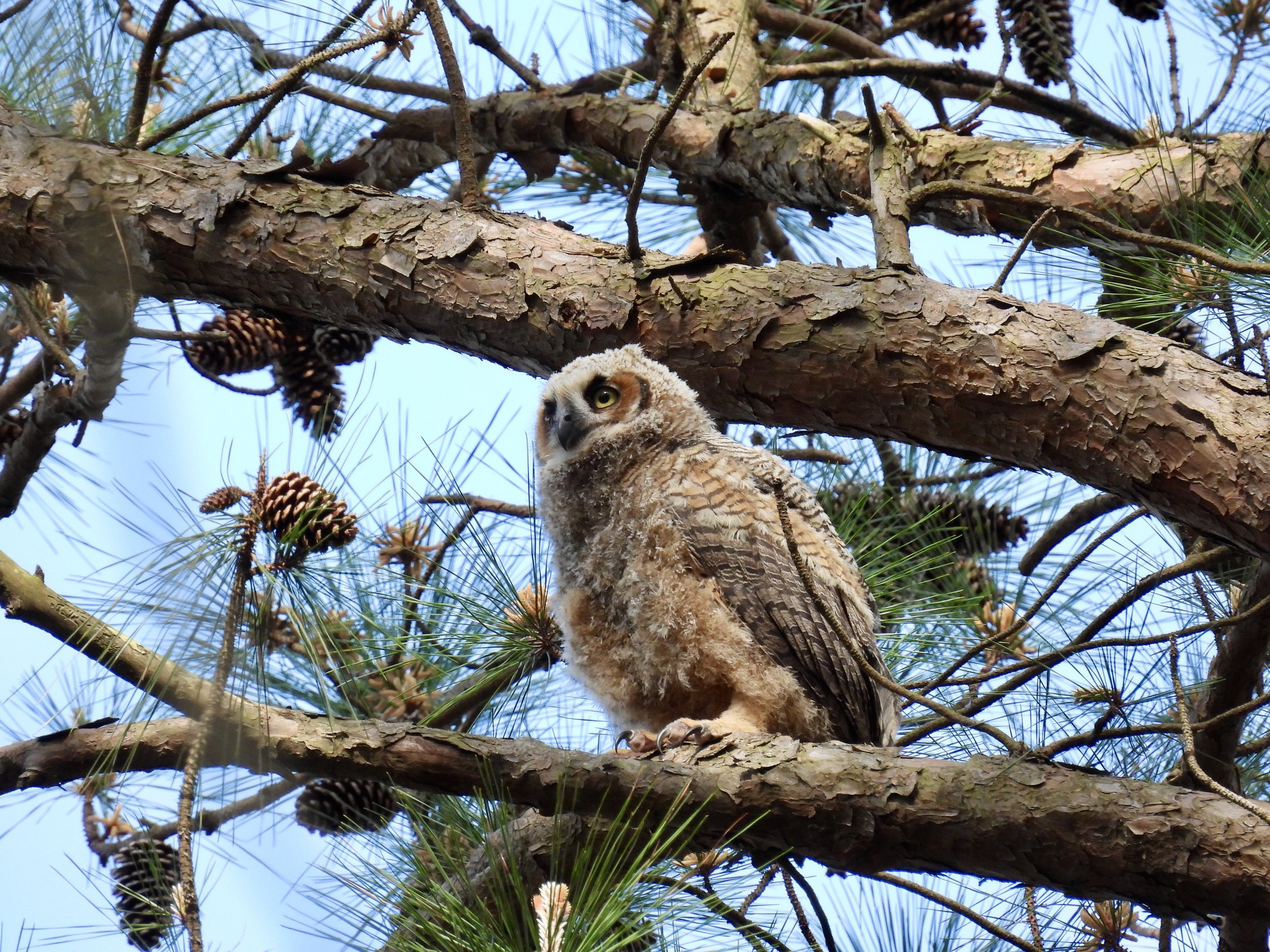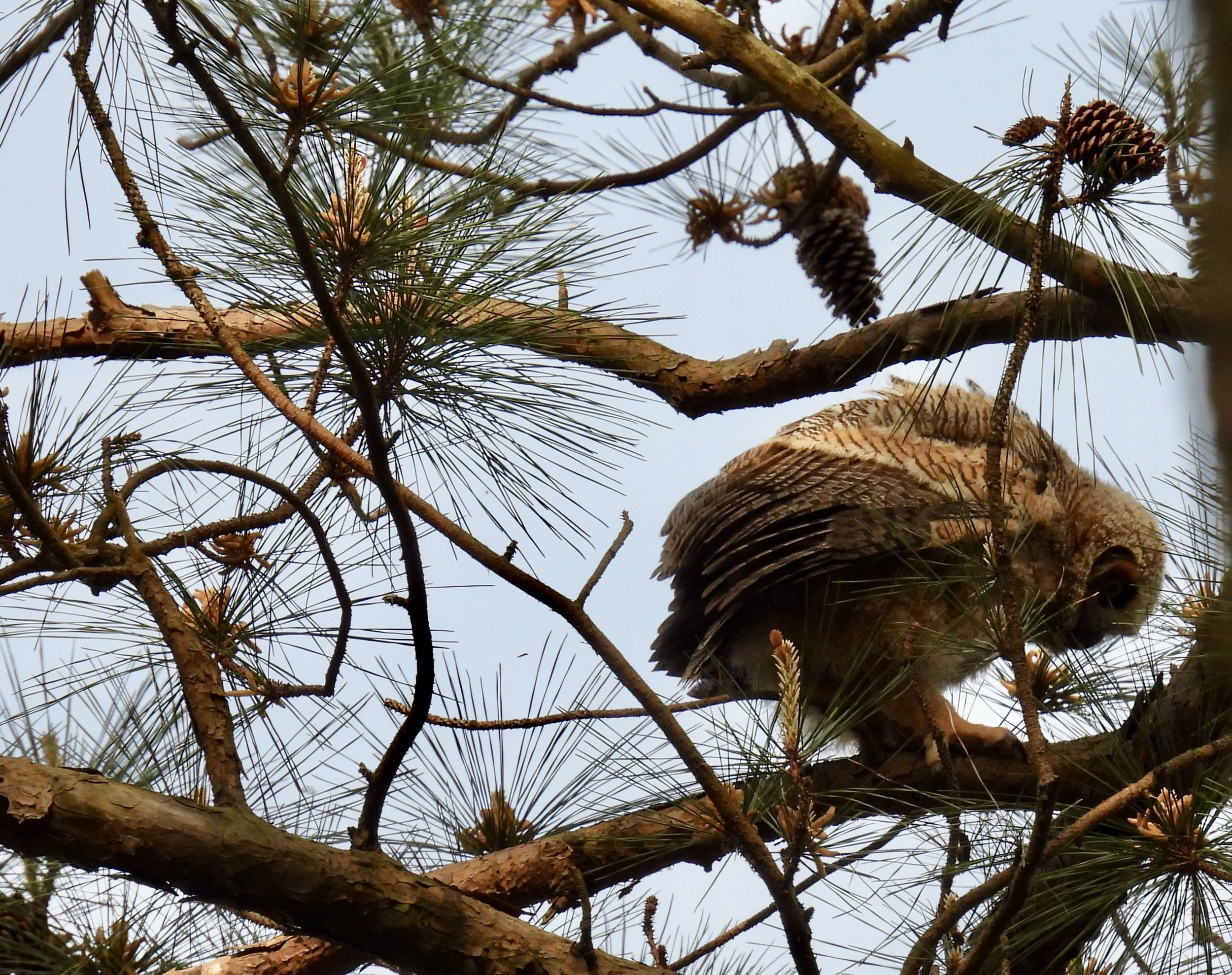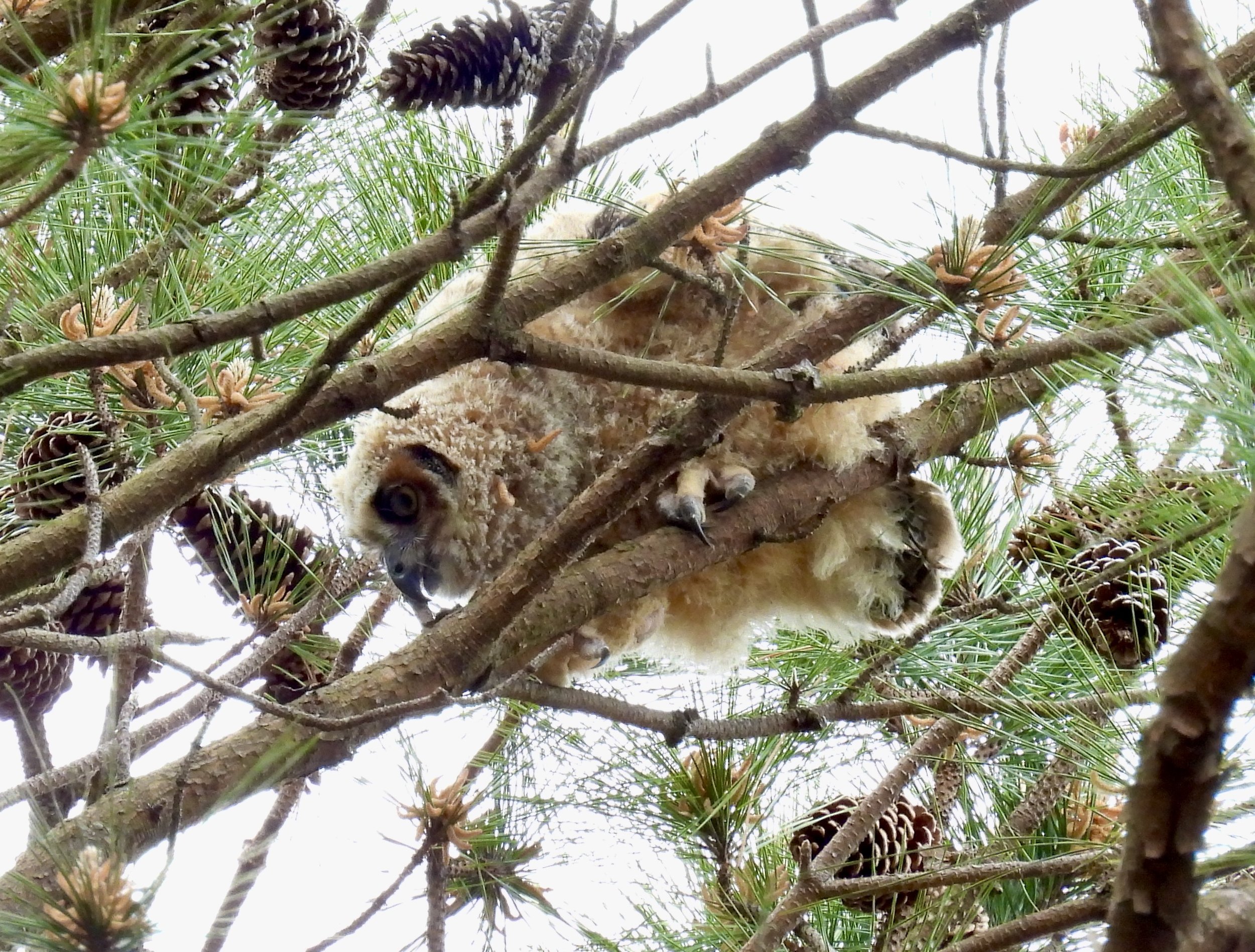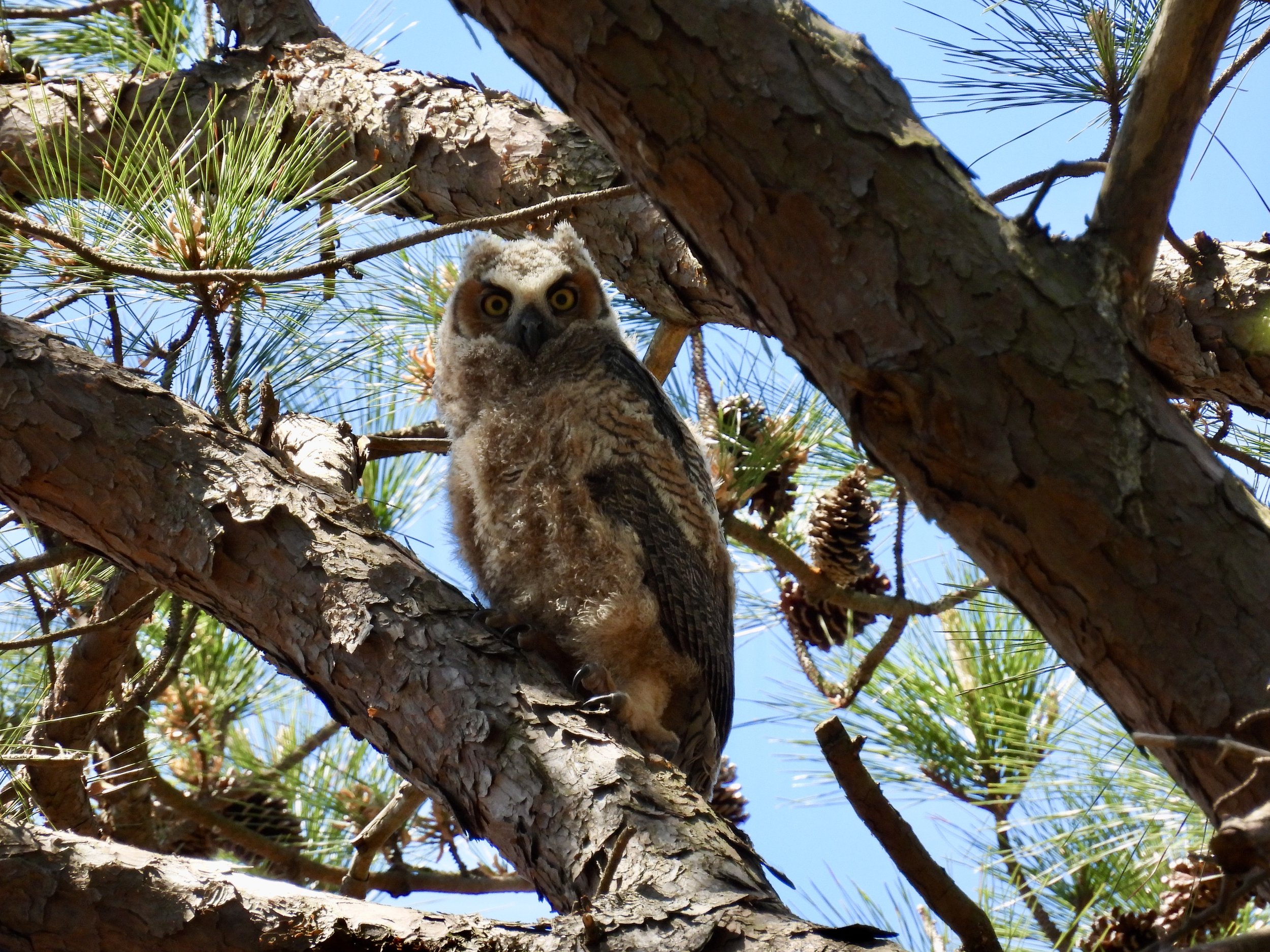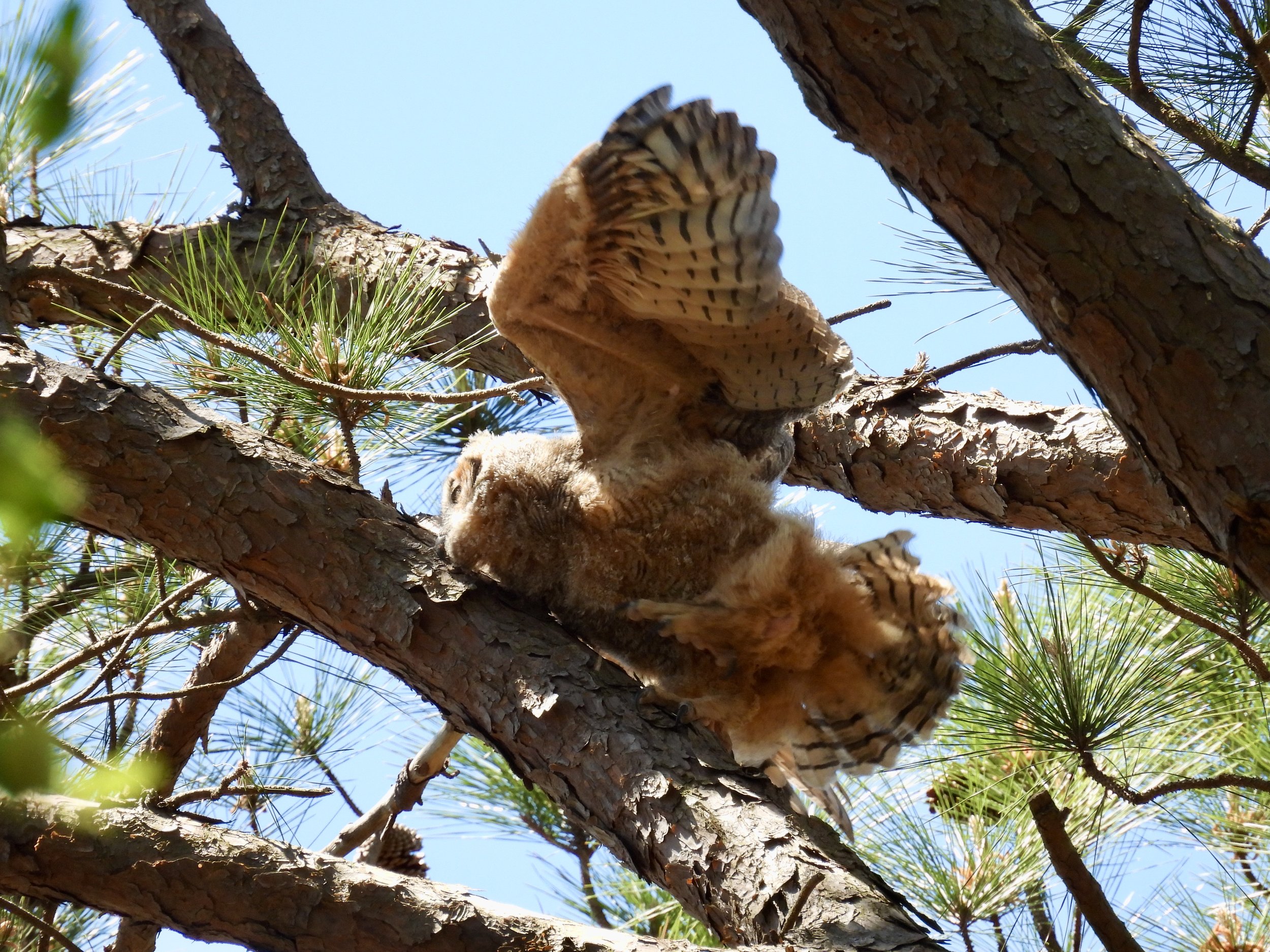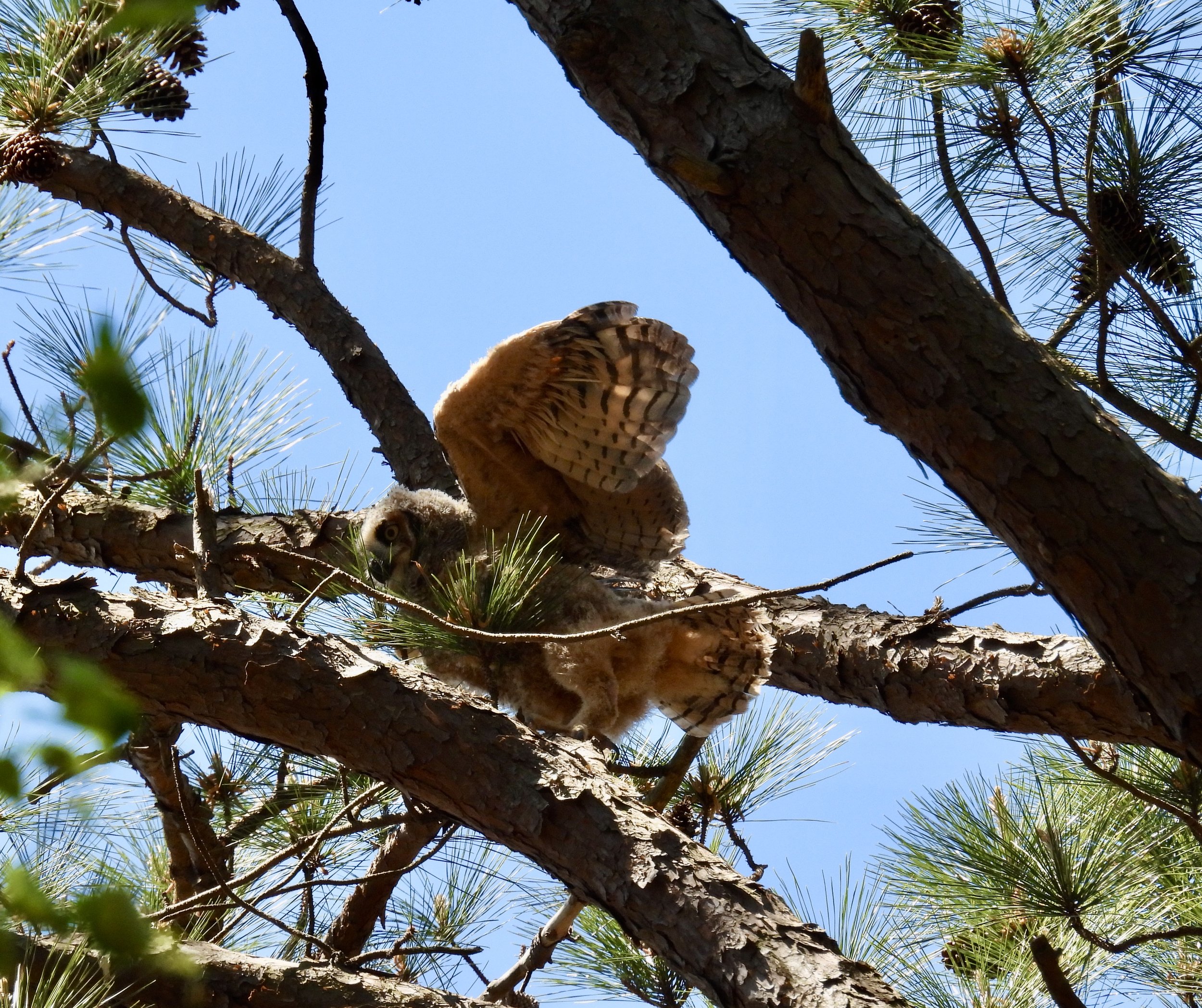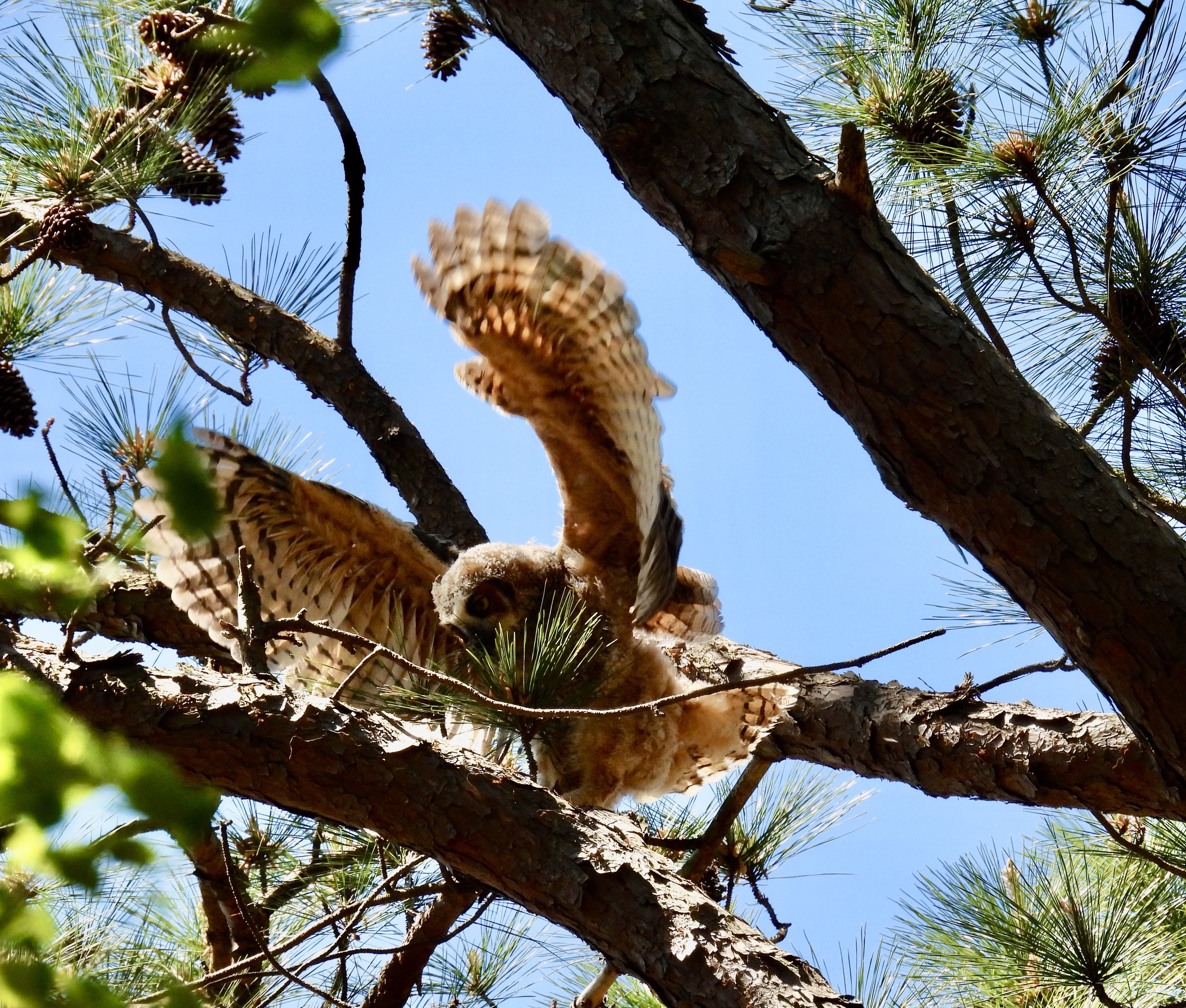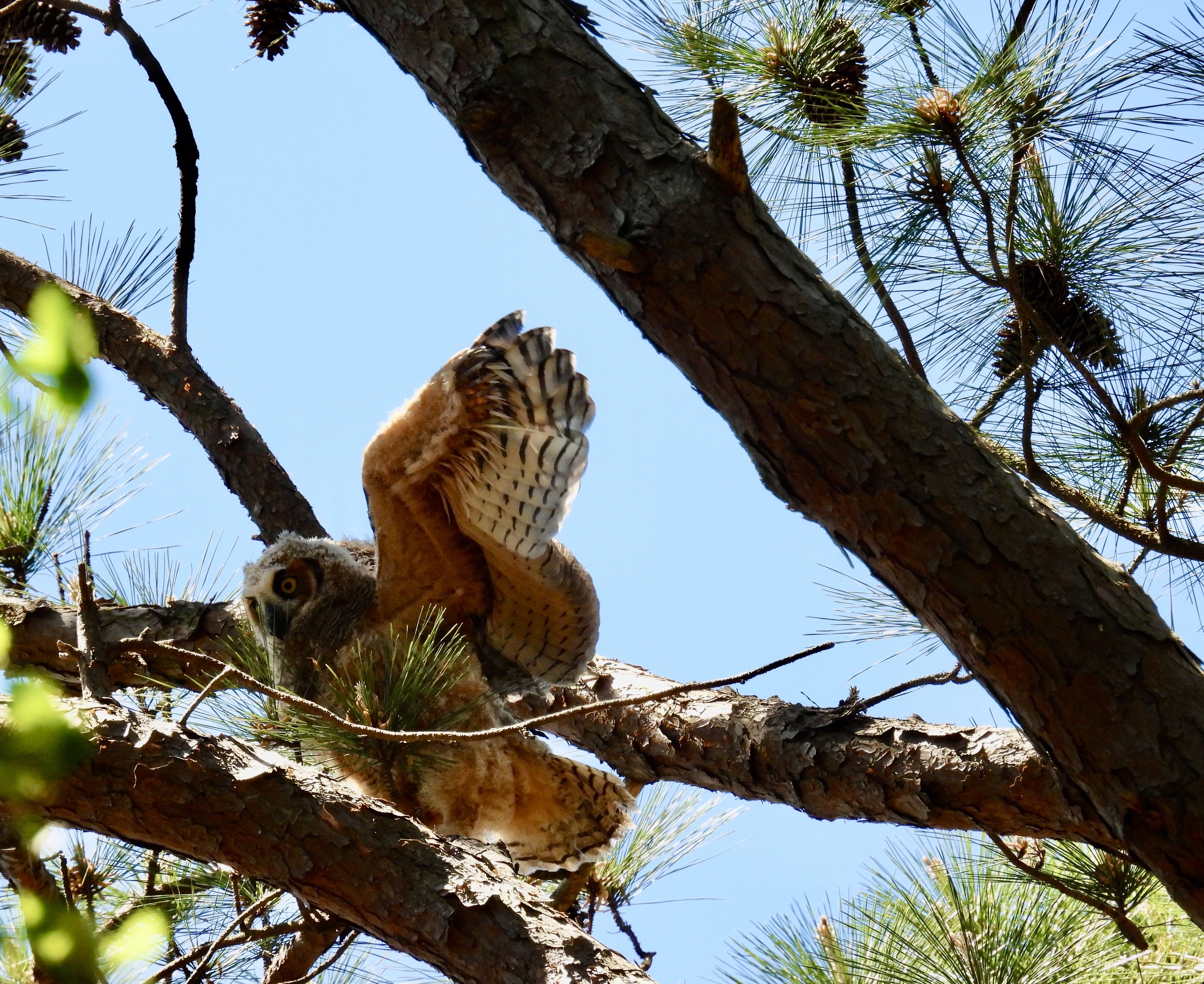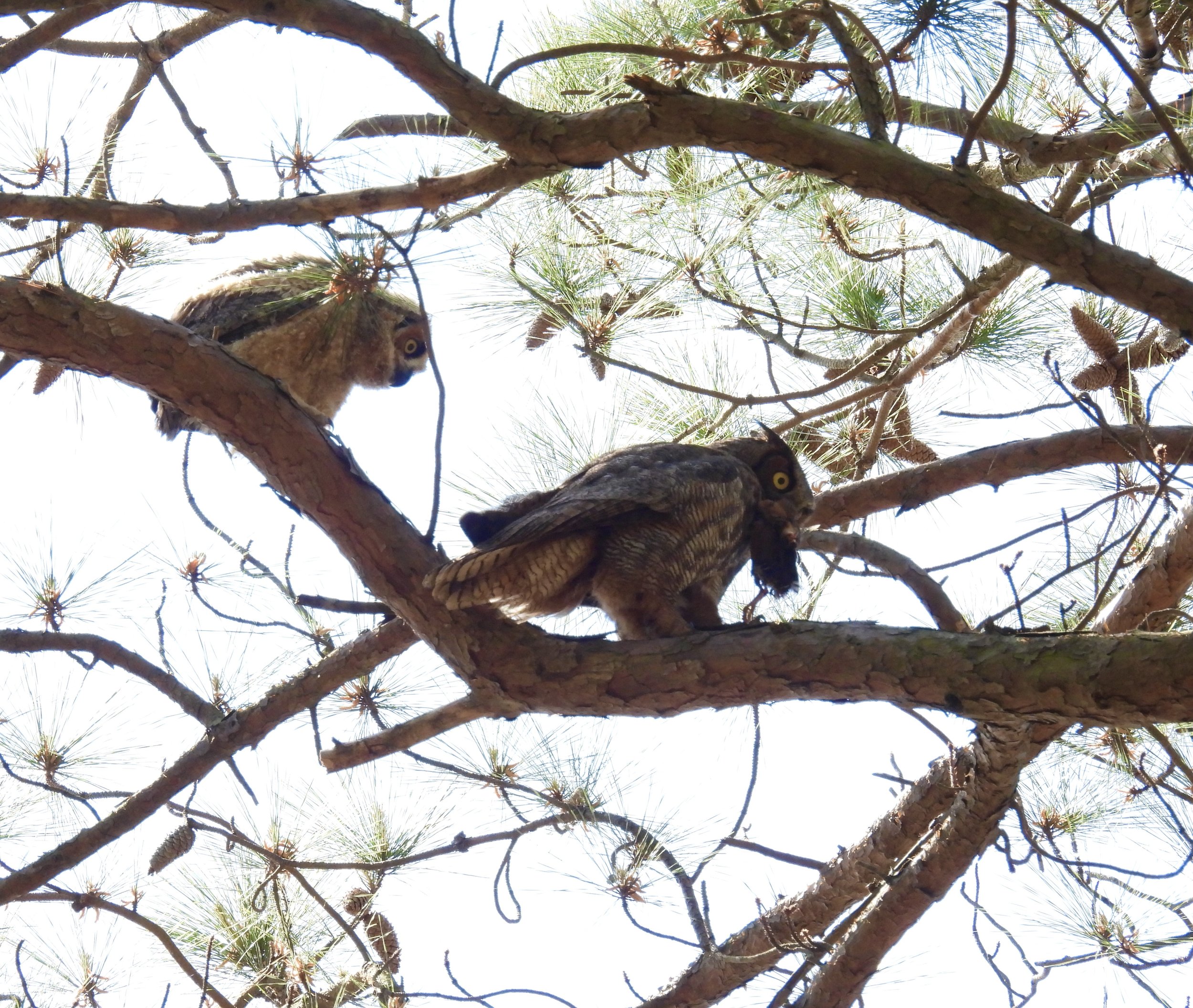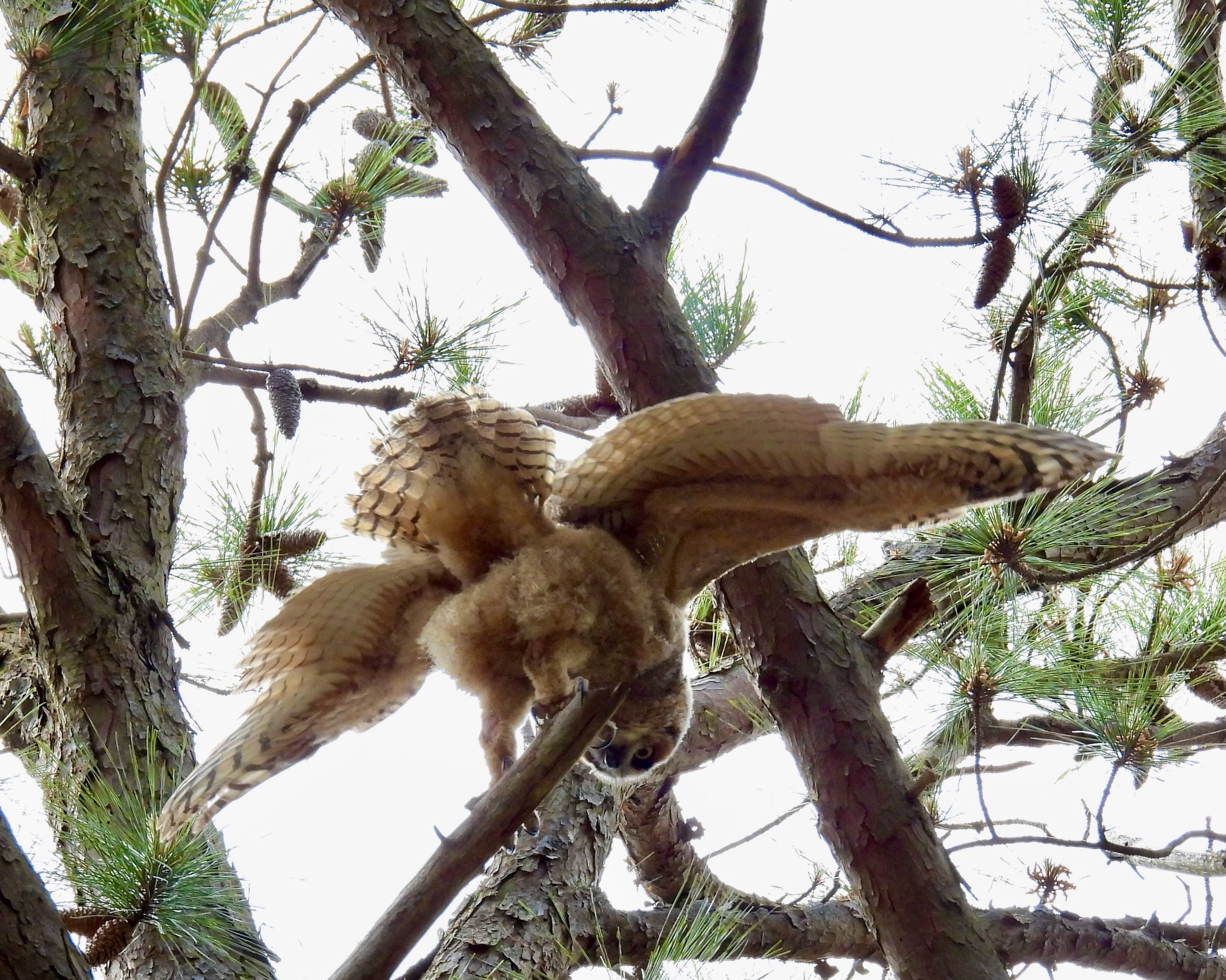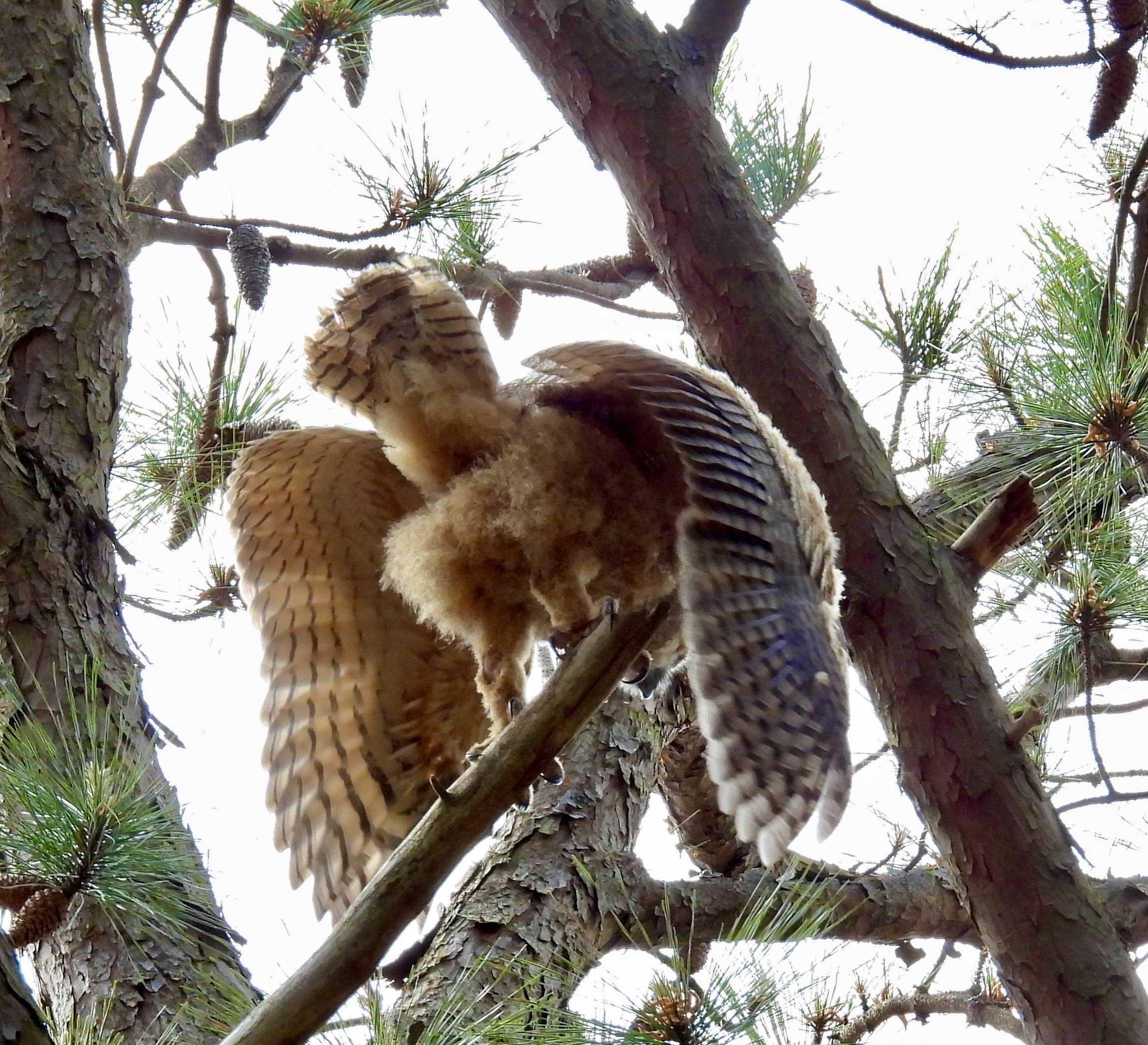Nestlings/
Fledglings
Segment 8
Branching & Fledging
“One of the activities that the owlets do prior to fledging is called branching, whereby they get out on a branch away from the nest, secure their balance, look around, expand their horizons and then they go back to the nest.”
Judy Wink photo archive
“In order for them to fledge the mom withholds food for about 2 days.”
“Branching usually happens right before they fledge. Some birds branch for 1 or 2 days, some birds will branch for about 8 or 10 days.”
-
In this next segment in the breeding cycle, Judy will talk about branching and fledging.
One of the activities that the owlets do prior to fledging is called branching, whereby they get out on a branch, away from the nest, secure their balance, look around, expand their horizons, and then they go back to the nest.
Branching is an opportunity for them to regain some or exploit some muscular coordination.
And the branches could be close to the nest or they could be a couple feet, because remember they can hop from one place to another.
Branching usually comes right before they fledge.
Some birds branch for one or two days, and some birds will branch for about eight or 10 days before they actually make the jump from the nest to the woodlot.
As far as fledging goes, fledging means they are now going to leave the nest and spread out from each other.
The fact that they need distance increases their safety.
If both the birds jumped and perched on the same branch, it would be easier for an avian predator to knock one off for a prey item.
Remember, they can't fly a sustained flight at this point.
So what happens when they actually fledge, meaning leave the nest and go into the woodlot, is that they will find a spot that's secure, protective, safe, and that they can get to easy, but they will each pick a different spot.
The whole time the mom has them under her watchful eye.
What happens is when they fledge, they usually react to gravity and gravity pulls them to the ground.
They'll look around for a leaner, a tree that's leaning or high bushes or something to get off the ground.
Parrot-like, they'll use their beak and feet to kind of pull them up.
Now they can flap their wings, but they do not get a lot of height on these flaps because the feathers aren't fully grown out.
They don't have full muscular development.
So they're not capable of a full power stroke to get up in the air.
So they do a lot of gliding, going to the ground, climbing up, gliding, going to the ground, climbing up, that whole activity can help them move about the woodlot.
Usually they're calling for food.
They're making themselves visible.
They'll be on the top of something, a snag, a small tree or large.
If they can get up, they can climb up.
They'll be somewhere visible to the mom and giving a hunger squeal because in order for them to fledge, the mom withholds food for about two days.
So they're hungry when they fledge.
So as soon as they get out of the nest, they're calling to mom for food.
It'll be months before they're capable of a full hunt on their own.
And we'll talk about that in another segment, but the mom will be sustaining them while they're moving about the woodlot.
At that point, she'll move them to a safe spot where they probably will reside through October.

